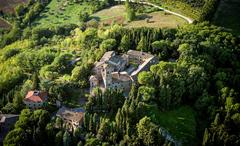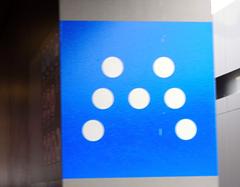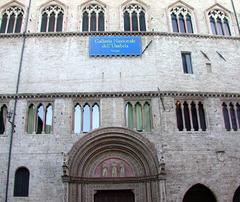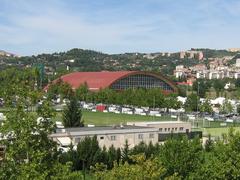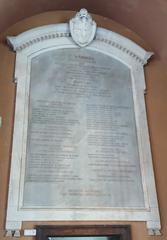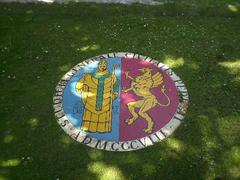
San Pietro Perugia Visiting Hours, Tickets, and Historical Sites Guide
Date: 04/07/2025
Introduction: Why Visit San Pietro in Perugia?
San Pietro in Perugia is an essential destination for anyone interested in Umbria’s deep spiritual, artistic, and historical roots. Situated just outside the city’s ancient walls, this basilica—once a powerful Benedictine abbey—stands as a testament to centuries of religious devotion, architectural evolution, and cultural patronage. With its layers of Romanesque, Renaissance, and Baroque architecture, plus a remarkable art collection including illuminated manuscripts and works by Umbrian masters like Perugino, San Pietro is a must-see for history buffs, art lovers, and travelers alike. This guide provides everything you need to plan a visit: from San Pietro Perugia visiting hours and tickets to historical context, accessibility, and travel tips, ensuring a rewarding and immersive experience. For further details, refer to authoritative sources such as Umbriatourism, The Patroclus, and the Perugia Tourism Board.
Table of Contents
- Early Foundations and Etrusco-Roman Origins
- The 10th-Century Abbey and Monastic Power
- Medieval Turbulence and Secular Conflicts
- Architectural Evolution: Romanesque to Renaissance
- Artistic Heritage and Decorative Splendor
- The Abbey’s Civic and Religious Role
- Modern Era: University Integration
- San Pietro Perugia Visiting Hours, Tickets, and Accessibility
- Travel Tips and Nearby Attractions
- Frequently Asked Questions (FAQ)
- Conclusion and Next Steps
Early Foundations and Etrusco-Roman Origins
San Pietro’s site has been sacred since antiquity. Archaeological evidence points to a religious structure here as early as the 4th century CE, likely built over Etruscan foundations. The transformation from pagan sanctuaries to Christian churches reflects the enduring spiritual significance of this location. (The Patroclus)
The 10th-Century Abbey and Monastic Power
The current basilica was founded in the 10th century atop an earlier Christian church, marking the rise of Benedictine monasticism in Umbria. San Pietro quickly became one of the region’s wealthiest and most influential abbeys, controlling vast lands and shaping local spiritual, agricultural, and artistic life. The monastic complex included the church, cloisters, gardens, and farmlands, embodying self-sufficiency and learning. (Umbriatourism)
Medieval Turbulence and Secular Conflicts
Throughout the Middle Ages, San Pietro’s abbey was drawn into the political and military turbulence of central Italy. It sometimes found itself aligned with local or external powers, leading to periods of conflict, damage, and subsequent restoration. Despite these challenges, the abbey retained its prominence and influence. (The Patroclus)
Architectural Evolution: Romanesque to Renaissance
San Pietro’s architecture is a harmonious blend of styles. The earliest elements date to the 10th and 11th centuries. Its 70-meter bell tower, built in the 13th century, is a city landmark. Renaissance and Baroque transformations in the 16th and 17th centuries enriched the interior with frescoes, oil paintings, and masterfully inlaid wooden choir stalls. The contrast between the plain Romanesque façade and the sumptuous interior is striking. (Nomads Travel Guide, Umbriatourism)
Artistic Heritage and Decorative Splendor
San Pietro’s interior is renowned for its art. The church contains around 150 works—canvases, paintings, and frescoes—spanning centuries. The choir stalls are celebrated for their intricate woodwork, and the illuminated Gregorian chant manuscripts underscore the church’s liturgical heritage. The art collection is second only to the National Gallery of Umbria, making San Pietro a vital repository of Umbrian culture. (Our Escape Clause)
The Abbey’s Civic and Religious Role
San Pietro’s abbots held significant civic influence, mediating disputes and shaping Perugia’s governance. The abbey’s wealth extended its reach beyond religious matters, influencing regional politics and economics. After the Papal conquest in the 16th century, local resources were diverted to Rome, inadvertently preserving many of Perugia’s medieval and Renaissance structures by limiting later Baroque alterations. (Umbriatourism, The Patroclus)
Modern Era: From Monastery to University
With monastic life declining, the former abbey now houses the University of Perugia’s Department of Agriculture and Environmental Science, exemplifying the adaptive reuse of historic sites. San Pietro remains active for worship, while its cloisters and gardens offer tranquil spaces for visitors. (Lonely Planet, Umbriatourism)
San Pietro Perugia Visiting Hours, Tickets, and Accessibility
-
Visiting Hours:
- Basilica: Tuesday–Saturday, 10:00 am–1:00 pm and 3:00 pm–6:00 pm
- Closed Mondays and major religious holidays
- Check the official site for updates.
-
Tickets:
- Entry is generally free.
- Special exhibitions or guided tours may require a ticket (typically €5–€10).
- Book onsite or online.
-
Guided Tours:
- Available daily at 11:00 am and 3:00 pm.
- Advance booking is recommended during peak seasons.
-
Accessibility:
- The basilica and cloisters are partially wheelchair accessible.
- Ramps and accessible restrooms are available; some historic areas have limited access.
(Nomads Travel Guide, Perugia Tourism Board)
Travel Tips and Nearby Attractions
- Best Times to Visit: Early mornings or late afternoons are quieter and offer ideal lighting for photography.
- Photography: Allowed without flash. Respect signage and restrictions during services.
- Nearby Attractions:
- Piazza IV Novembre
- Rocca Paolina
- National Gallery of Umbria
- Giardini Frontone and St. Augustine Church
- Getting There:
- Walking distance from the city center.
- Accessible by public transport (bus, MiniMetro), taxi, or car.
(The Tourist Checklist, Nomads Travel Guide)
Frequently Asked Questions (FAQ)
Q: What are San Pietro Perugia visiting hours?
A: Typically Tuesday–Saturday, 10:00 am–1:00 pm and 3:00 pm–6:00 pm. Closed Mondays and certain holidays. (San Pietro Official Website)
Q: Is there an entrance fee?
A: Entry is free; guided tours or exhibitions may require a ticket.
Q: Is San Pietro accessible for people with disabilities?
A: Partially. Some areas have ramps, but older sections may have steps.
Q: Are guided tours available?
A: Yes, daily at 11:00 am and 3:00 pm. Booking in advance is recommended.
Q: Can I take photographs?
A: Yes, but without flash. Follow posted restrictions.
Q: Are religious services open to the public?
A: Yes. San Pietro is an active place of worship with regular Masses.
Conclusion and Next Steps
San Pietro in Perugia offers visitors a profound journey through centuries of history, art, and spirituality. From Etrusco-Roman beginnings to Benedictine splendor and vibrant university life, the basilica bridges past and present in unique ways. With free entry, optional guided tours, and peaceful cloisters and gardens, San Pietro is accessible and rewarding for all. For up-to-date San Pietro Perugia visiting hours, tickets, and travel tips, consult the official website and the Perugia Tourism Board. Download the Audiala app for personalized itineraries and audio guides, and explore related articles on Perugia’s historical sites for a fuller experience.
References and Further Reading
- San Bernardino and San Pietro in Perugia, The Patroclus
- Umbriatourism: Perugia Tourism Information
- San Pietro Perugia Church, Umbria e Cultura
- Things to Do in Perugia, Our Escape Clause
- Things to Do in Perugia, Flashpacking Italy
- Basilica di San Pietro Perugia, Nomads Travel Guide
- Perugia’s Hidden Gem: Basilica of San Pietro, Inside Travel Experiences
- San Pietro Official Website
- Perugia Tourism Board
- Basilica San Pietro Opening Hours
- TripHobo San Pietro
- The Tourist Checklist: Things to Do in Perugia
- Wikipedia: San Pietro, Perugia
- Secret Attractions: Perugia Hidden Historical Sites





